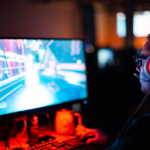(anime:6tbztsekyf0= sus)Anime, a distinct form of animation originating from Japan, has become a global phenomenon. It encompasses a wide range of genres and appeals to various age groups. Unlike traditional Western cartoons, anime often features complex storylines, deep character development, and unique art styles, making it a rich and engaging medium.
The Origins of Anime
(anime:6tbztsekyf0= sus)Anime’s roots can be traced back to early 20th-century Japan, where it began as short films influenced by Western animation techniques. Pioneers like Osamu Tezuka, often called the “God of Manga,” played a crucial role in shaping the medium. His work “Astro Boy” set the stage for modern anime, introducing stylistic elements and narrative techniques that are still prevalent today.
Anime’s Growth in Japan
(anime:6tbztsekyf0= sus)Throughout the mid-20th century, anime continued to grow in popularity within Japan. The 1960s and 70s saw the rise of television anime, with series like “Speed Racer” and “Gatchaman” becoming household names. This period also marked the advent of mecha anime, with titles like “Mobile Suit Gundam” laying the groundwork for one of anime’s most enduring genres.
The International Boom
(anime:6tbztsekyf0= sus)Anime began to gain international recognition in the 1980s and 90s. Shows like “Dragon Ball,” “Sailor Moon,” and “Pokémon” captured the imaginations of audiences worldwide. The success of these series helped establish anime as a global entertainment medium, leading to increased availability of translated and subtitled content.
The Role of Manga
(anime:6tbztsekyf0= sus)Manga, the Japanese equivalent of comic books, plays a significant role in the anime industry. Many popular anime series are adaptations of successful manga. This symbiotic relationship ensures a steady stream of new content and allows for extensive world-building and character development, as seen in series like “Naruto” and “One Piece.”
Anime’s Unique Art Style
(anime:6tbztsekyf0= sus)One of anime’s most defining characteristics is its unique art style. Characters often feature exaggerated facial expressions and large, expressive eyes. This style, influenced by early Disney animations, allows for a wide range of emotional expression and visual storytelling. The art style varies significantly between genres, from the minimalist designs of “Sazae-san” to the intricate detail of “Attack on Titan.”
The Importance of Storytelling
(anime:6tbztsekyf0= sus)Anime is renowned for its storytelling prowess. Unlike many Western cartoons that target younger audiences, anime often explores mature themes and complex narratives. Series like “Death Note” and “Steins;Gate” delve into psychological and philosophical topics, while “Clannad” and “Your Lie in April” explore emotional and relational complexities.
Genre Diversity
(anime:6tbztsekyf0= sus)Anime encompasses a vast array of genres, ensuring something for everyone. Shonen anime, like “My Hero Academia,” targets young males with action-packed stories, while shojo anime, such as “Fruits Basket,” appeals to young females with romantic and slice-of-life themes. Seinen and josei anime cater to adult men and women, respectively, offering more mature content.
Iconic Anime Series
(anime:6tbztsekyf0= sus)Several anime series have achieved iconic status due to their impact and popularity. “Neon Genesis Evangelion,” for instance, revolutionized the mecha genre with its deep psychological themes and complex characters. “Cowboy Bebop” is celebrated for its blend of sci-fi, western, and noir elements, along with its memorable soundtrack.
The Impact of Studio Ghibli
(anime:6tbztsekyf0= sus)Studio Ghibli, founded by Hayao Miyazaki and Isao Takahata, has produced some of the most beloved and critically acclaimed anime films. Works like “Spirited Away,” “My Neighbor Totoro,” and “Princess Mononoke” have left a lasting legacy, known for their stunning animation, compelling storytelling, and profound themes.
Technological Advancements
(anime:6tbztsekyf0= sus)The advancement of technology has significantly influenced anime production. Early anime relied heavily on traditional hand-drawn animation, but modern series increasingly use digital techniques. This shift has allowed for greater detail, smoother animations, and more dynamic action scenes, enhancing the overall viewing experience.
The Role of Music
(anime:6tbztsekyf0= sus)Music plays a vital role in anime, often enhancing the emotional impact of a scene or setting the tone for a series. Many anime feature memorable opening and ending themes, as well as soundtracks composed by renowned musicians. Yoko Kanno’s work on “Cowboy Bebop” and Joe Hisaishi’s compositions for Studio Ghibli films are prime examples.
Anime and Video Games
(anime:6tbztsekyf0= sus)The relationship between anime and video games is deeply intertwined. Many popular anime series have been adapted into video games, and vice versa. Titles like “Persona 5” and “Dragon Ball FighterZ” offer immersive experiences that expand on the worlds and stories established in their respective anime.
The Global Fandom
(anime:6tbztsekyf0= sus)Anime has cultivated a massive global fandom, with conventions, fan clubs, and online communities dedicated to the medium. Events like Anime Expo and Comic-Con bring fans together to celebrate their favorite series, meet creators, and participate in cosplay. Online platforms like Crunchyroll and Funimation have made anime more accessible, further expanding its reach.
Cosplay Culture
(anime:6tbztsekyf0= sus)Cosplay, the practice of dressing up as characters from anime, manga, and video games, is a significant aspect of anime culture. Cosplayers often spend considerable time and effort creating detailed costumes and props, showcasing their dedication and creativity. Conventions frequently host cosplay competitions, highlighting the craftsmanship of participants.
The Influence on Fashion
(anime:6tbztsekyf0= sus)Anime has also influenced fashion, particularly in Japan. Styles like “kawaii” (cute) and “harajuku” have roots in anime aesthetics. Characters’ unique and often elaborate outfits inspire fashion trends, with fans emulating their favorite looks in everyday wear or through cosplay.
The Future of Anime
The future of anime looks promising, with new series and films continually being produced. The rise of streaming services has made it easier for fans to access a wide range of content, fostering the growth of anime’s global audience. Additionally, advancements in technology and storytelling techniques promise to push the boundaries of what anime can achieve.
Anime in Academia
(anime:6tbztsekyf0= sus)Anime is increasingly being studied in academic settings, with scholars examining its cultural, social, and artistic significance. Courses on anime and manga are offered at various universities, and research papers delve into topics such as gender representation, narrative structure, and the impact of globalization on anime.
Social and Cultural Themes
Anime often reflects and critiques social and cultural issues. Series like “Attack on Titan” and “Psycho-Pass” explore themes of government control and societal structure, while “Tokyo Godfathers” and “A Silent Voice” address issues like homelessness and bullying. These narratives offer viewers a chance to reflect on real-world problems through a fictional lens.
Psychological Depth
Many anime delve into psychological themes, providing deep character studies and exploring the human psyche. “Paranoia Agent” and “Serial Experiments Lain” are notable examples, blending psychological horror and science fiction to create thought-provoking narratives that challenge viewers’ perceptions.
The Role of Directors
Directors play a crucial role in shaping the vision and execution of anime series and films. Visionaries like Hayao Miyazaki, Satoshi Kon, and Makoto Shinkai have left indelible marks on the industry, known for their unique storytelling styles and thematic explorations. Their works continue to inspire new generations of creators.
The Influence of Western Culture
Western culture has had a notable influence on anime, with many series incorporating elements from American movies, music, and literature. “Samurai Champloo,” for instance, blends samurai action with hip-hop culture, while “Black Lagoon” draws inspiration from Hollywood action films. This cross-cultural exchange enriches the anime medium.
Challenges and Controversies
Despite its success, the anime industry faces several challenges and controversies. Issues such as labor conditions for animators, intellectual property rights, and representation of gender and race continue to spark debate. Addressing these concerns is crucial for the sustainable growth of the industry.
Conclusion
Anime has evolved from a niche Japanese art form to a global cultural phenomenon. Its unique blend of storytelling, art, and music, coupled with its diverse genres and themes, ensures its continued popularity and influence. As technology and globalization continue to shape the industry, anime’s future looks bright, promising even more innovative and captivating content for audiences around the world.







